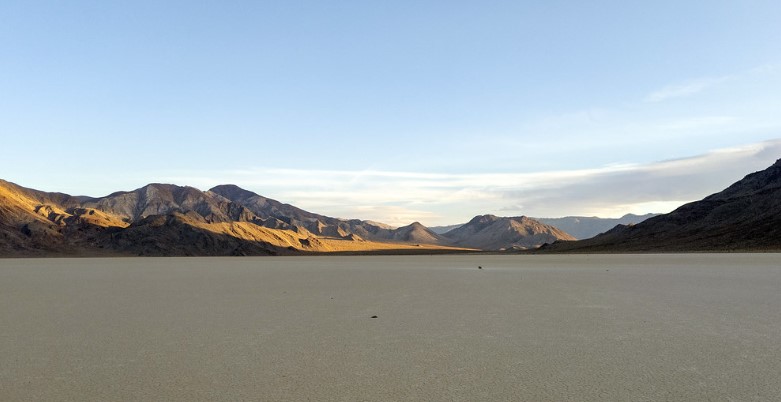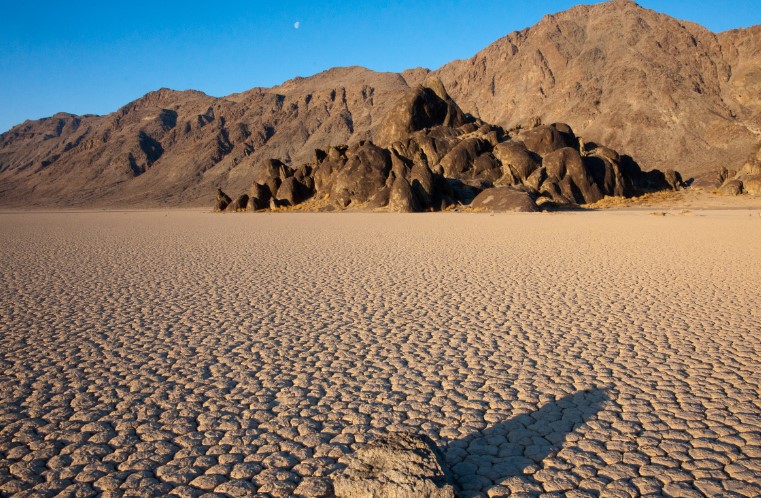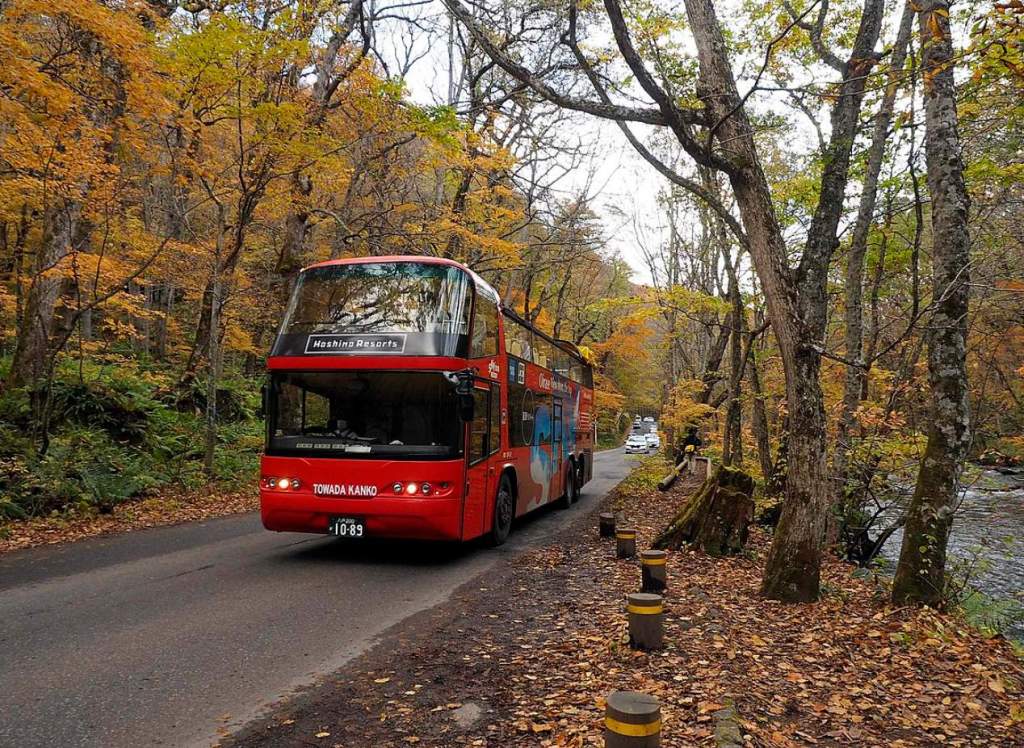A scenic dry lake feature known as the Racetrack Playa features sailing stones that leave linear imprints of a racetrack on the ground. The site is located in Death Valley National Park in Inyo County, California, U.S.A., above Death Valley’s northern side. Racetrack Playa is a geological feature in a dry lakebed that is known for its peculiar “racetrack” features, which are long, straight tracks that are etched into the surface of the lake bed. The tracks are thought to be formed by rocks that move across the surface of the lakebed, leaving behind a track as they go.
The exact mechanism by which rocks move across the surface of the lakebed is not fully understood, and there have been several theories proposed to explain the phenomenon. Some scientists believe that the tracks are formed by strong winds that push rocks across the surface of the lake bed. Others believe that the tracks are formed by the movement of water or ice.
Playa Racetrack is a popular tourist destination in Death Valley National Park, and visitors can walk along the tracks and see the rocks that have been left behind. A rough dirt road leads to the racetrack, which is located in a remote area of the park.
The Racetrack Playa stretches 4.5 km north-south and 1.3 mi east-west at a height of 3,714 feet above sea level. The northern and southern ends of the beach are only 1.5 inches apart, making the beach exceptionally flat and level. The north end accumulates fine-grained sediment due to a major influx of fine-grained sediment. Ubehebe Peak rises 1,964 feet above the lakebed, 0.85 miles to the west of the racetrack, the highest point in the vicinity.
The racetrack is home to sailing stones, which are geological phenomena. In the absence of human or animal intervention, slabs of dolomite and syenite glide across the beach surface, leaving visible tracks. When there is light wind, ice sheets just a few millimeters thick melt, causing rocks to move. An ice shove created by these thin panels of floating ice moves the rocks at up to five meters (16 feet) per minute.
There is a bench here that has scenic views of the racetrack, the grandstand, and the mountain scenery. It was placed by the Mano Seca Group. The Lippincott Pass road, which enters the Racetrack valley from the southwest and climbs up from Saline Valley, is another access point to Racetrack Playa. A high-clearance 4WD vehicle with all-terrain tires is the only vehicle capable of driving Lippincott Pass and Saline Valley roads.
Between the Cottonwood Mountains on the east and the Nelson Range on the west, the beach is located in the small Racetrack Valley endorheic basin. During periods of heavy rain, water drains down from the surrounding mountains, forming a shallow, short-lived endorheic lake. A thin layer of water evaporates rapidly under the hot desert sun, leaving behind a layer of soft, slick mud. During the drying process, the mud shrinks and cracks into a mosaic pattern of interlocking polygons.
There are two large bedrock outcrops on the northern side of the playa that rise dramatically above its surface. The Grandstand is the largest landmark, a 73-foot (20 m)-high quartz monzonite outcrop contrasting dramatically with the Racetrack’s white surface. A smaller carbonate outcrop makes up the second ‘island’. Three alignments of depressions exist (intermittent springs) in the playa.
-
The Spinal Springs are located in the middle of Racetrack Beach. There are conical depressions barely a few centimeters (inches) deep at its northern end, which is 550 meters (600 yards) long.
-
In the southeast corner of Racetrack Playa, Edge Springs forms an alignment of depressions. Along the base of the steep mountain range, the alignment parallels the toes of alluvial fans.
-
Located within the Racetrack Playa, Gindarja Springs consists of three large depressions aligned northwesterly. Three are located on the edge of the beach, and two are completely within the beach. There is significant vegetation associated with all three.

The racetrack is home to sailing stones, which are geological phenomena. In the absence of human or animal intervention, slabs of dolomite and syenite glide across the beach surface, leaving visible tracks. Photo credit: Gregory “Slobirdr” Smith 
A scenic dry lake feature known as The Racetrack Playa features sailing stones that leave linear imprints of a racetrack on the ground. Photo Credit – Matthew Dillon 
When there is light wind, ice sheets just a few millimeters thick melt, causing rocks to move.Photo credit: Matthew Dillon 
During periods of heavy rain, water drains down from the surrounding mountains, forming a shallow, short-lived endorheic lake. Photo Credit – Matthew Dillon 

The Racetrack Playa stretches 4.5 km north-south and 1.3 mi east-west at a height of 3,714 feet above sea level. Photo Credit – Wikipedia






